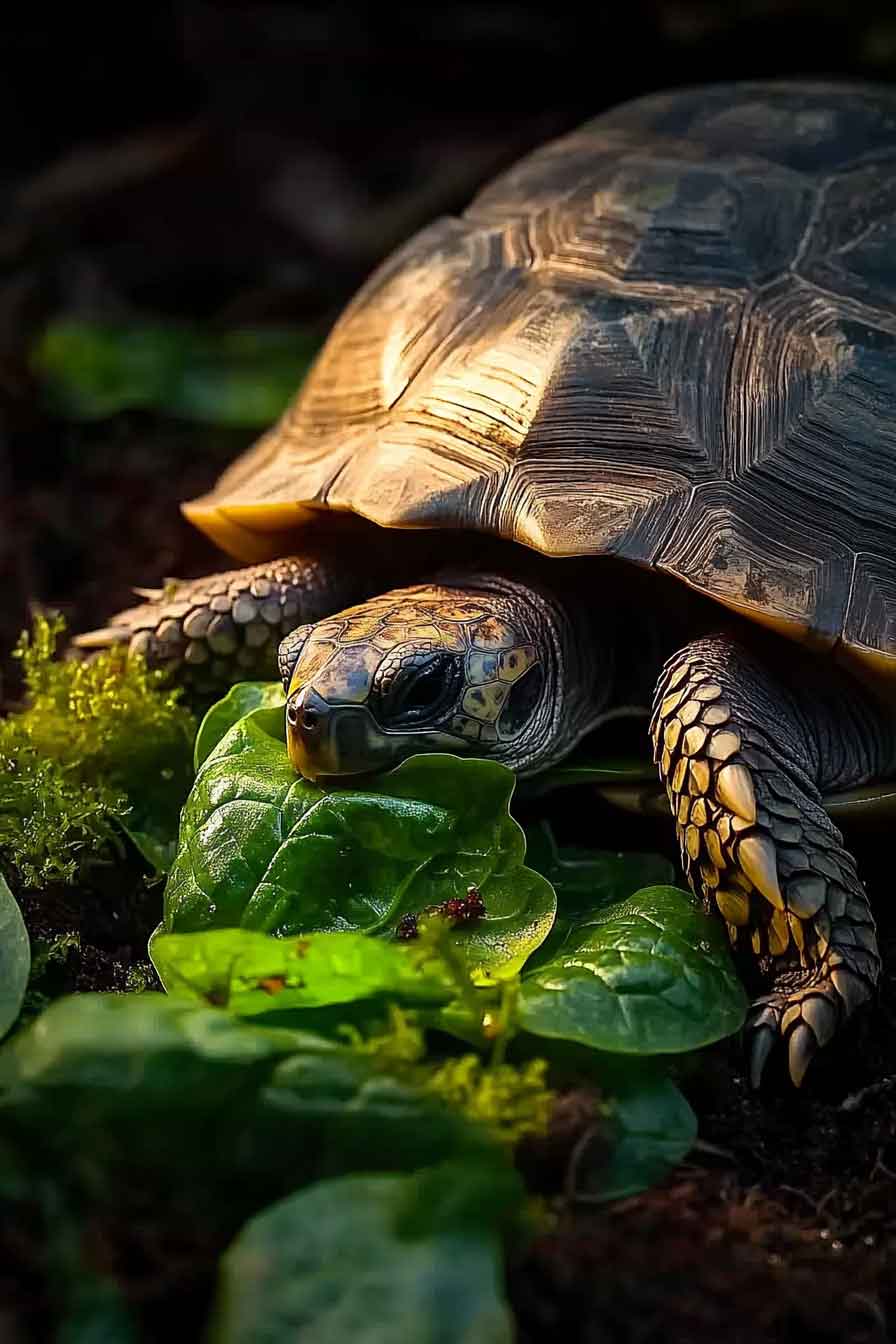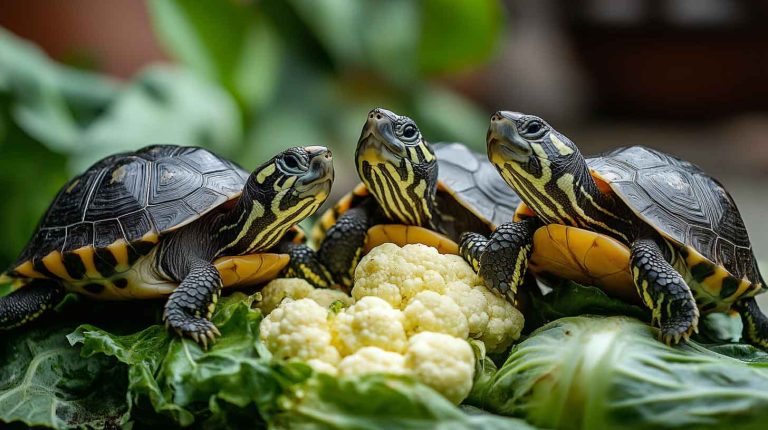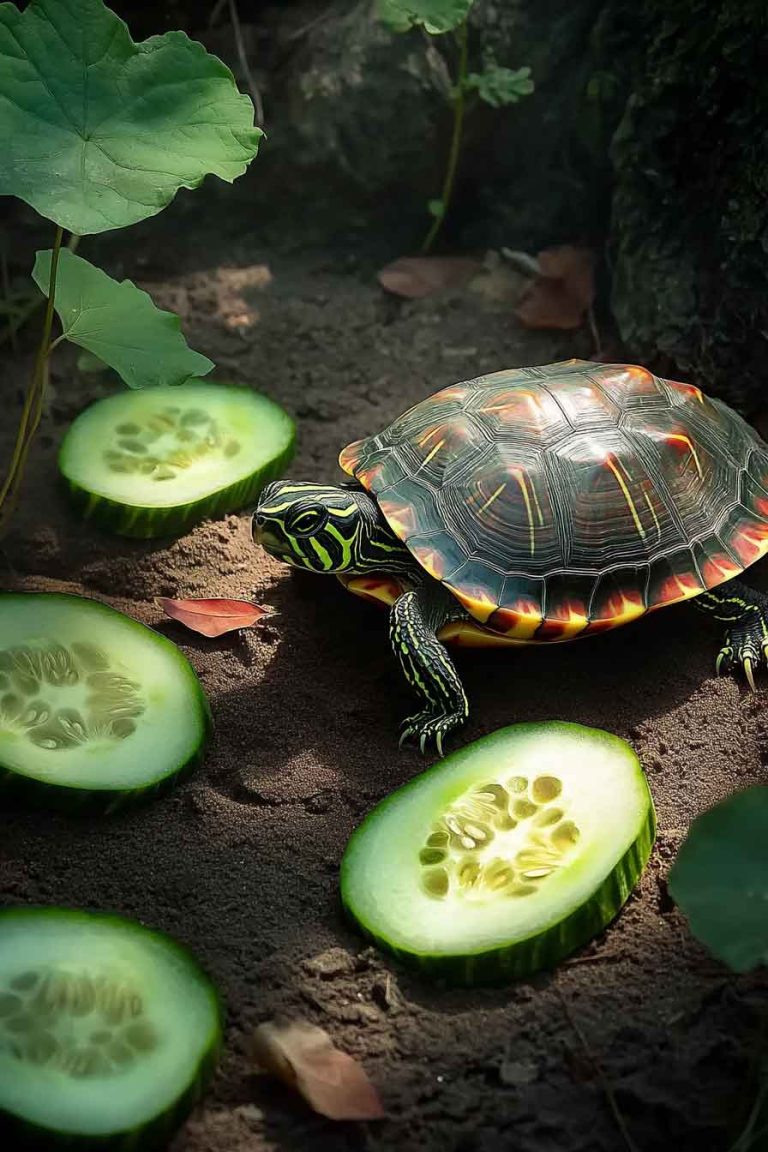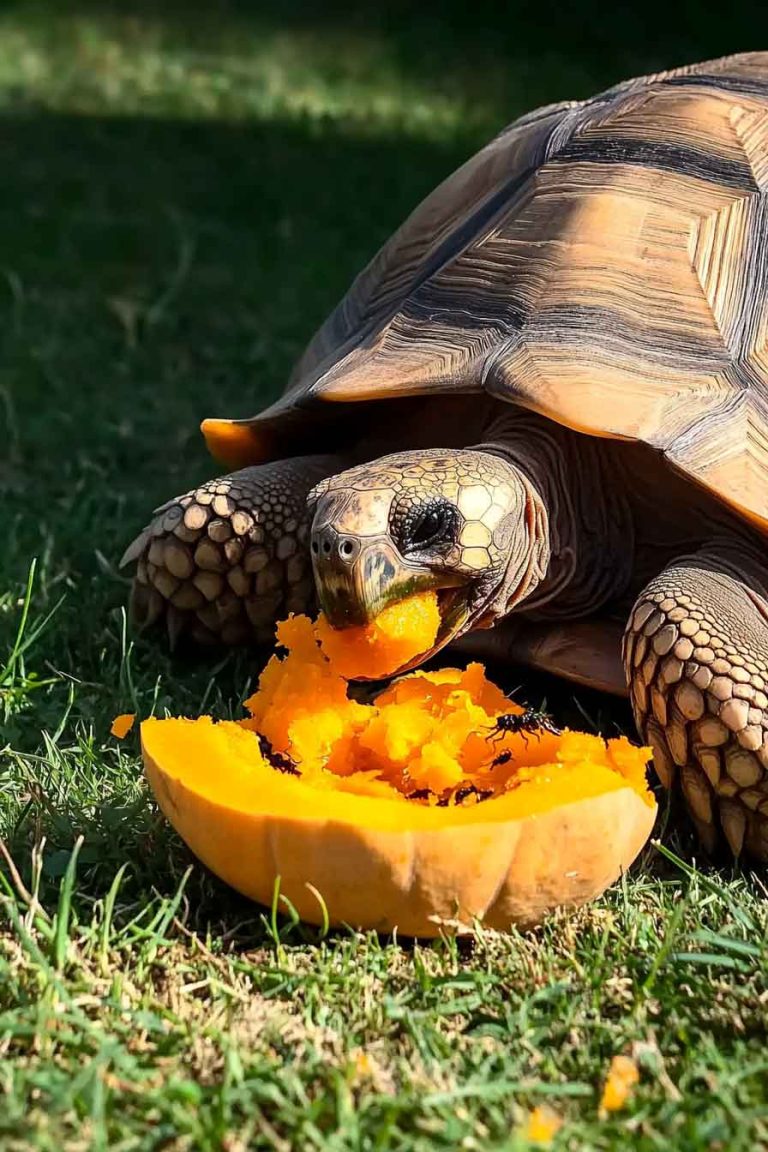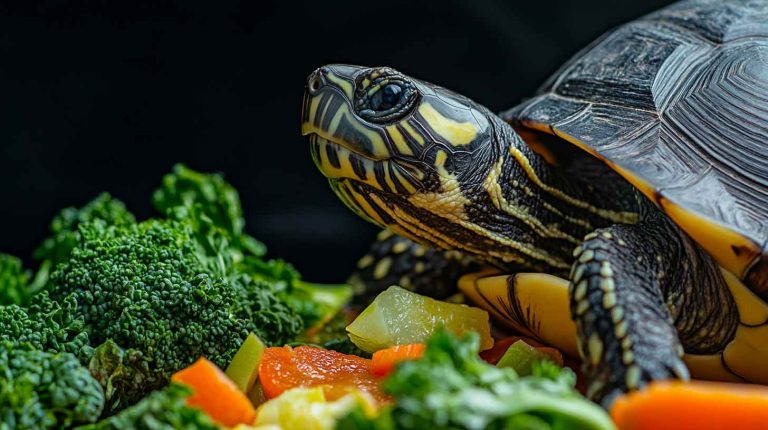Can Turtles Eat Spinach? Find Out What Experts Say
So here’s the thing. If you’ve got a turtle like I do, you know how fun it is to treat them with a little snack now and then. Sometimes we just want to share what’s on our plate, especially when it’s something green and healthy like spinach. But before you do that—let’s take a moment…
So here’s the thing. If you’ve got a turtle like I do, you know how fun it is to treat them with a little snack now and then. Sometimes we just want to share what’s on our plate, especially when it’s something green and healthy like spinach. But before you do that—let’s take a moment and talk about it. Because not everything that’s good for us is good for our turtles.
Is Spinach Safe for Turtles to Eat?
Now, this might surprise you. Spinach isn’t poisonous to turtles, not like onions or garlic. So if your turtle takes a small bite, it’s not the end of the world. But here’s the catch—it’s not really safe either. And that’s because of something hiding in spinach that most people don’t know about: oxalates, or oxalic acid.
Oxalates are naturally found in spinach (and a few other veggies too). What they do is stop the turtle’s body from absorbing calcium the right way. That might sound small, but it can lead to some big problems—especially when you remember how much turtles need calcium to grow strong shells and bones.
So, yes, turtles can eat spinach, technically. But it’s not a smart choice. Even if they like the taste, it’s not worth the risk. Experts usually recommend avoiding it altogether—or, at most, offering just a tiny bit once in a while, and only if your turtle is getting enough calcium from other sources.
Why Calcium Matters So Much for Turtles
Here’s something I’ve learned after spending a lot of time reading about turtles (and talking to vets): Calcium is life for turtles.
Without enough calcium, turtles can’t build or maintain their shells. And we’re not just talking about looking good—those shells protect their bodies from injury and infection. Inside, their bones need calcium to grow strong too. But when turtles eat too many oxalates from foods like spinach, calcium can’t do its job. It gets blocked.
When this happens again and again, it leads to something called Metabolic Bone Disease (MBD). It’s common in pet turtles, especially when they eat the wrong foods or don’t get proper UVB lighting. With MBD, turtles can develop soft shells, swollen limbs, weak muscles, and even twisted bones. It can hurt them a lot, and sometimes it’s permanent.
That’s why I’m really careful with anything that messes with calcium—like spinach. It’s just not worth the risk to me.
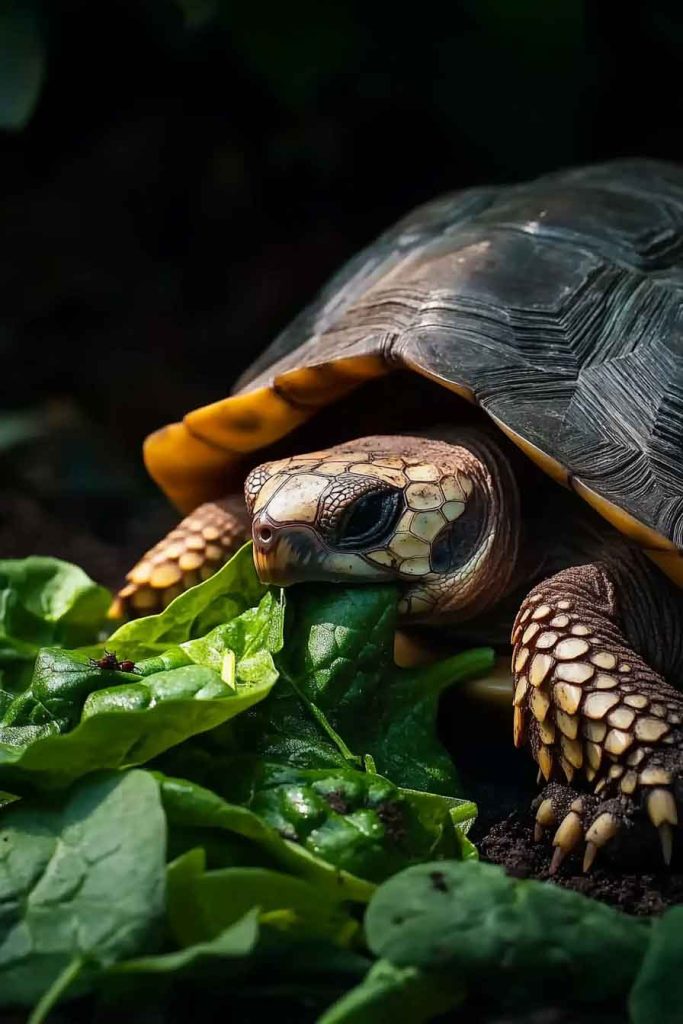
What’s Inside Spinach?
Let’s break it down a bit. Spinach is a leafy green that’s packed with vitamins and minerals. It has things like:
- Vitamin A – Good for your turtle’s eyes and skin.
- Vitamin K – Helps blood clot and supports healthy bones.
- Iron – Important for healthy blood.
- Fiber – Helps with digestion.
But it also has a very high amount of oxalic acid—one of the highest of all vegetables, actually. That’s where the trouble comes in. Because that oxalic acid latches onto calcium, forms crystals, and flushes it right out of the turtle’s system. So even if you’re giving your turtle calcium-rich foods, if they’re also eating spinach, a lot of that calcium is getting wasted.
What Happens If a Turtle Eats Too Much Spinach?
Alright, let’s say your turtle already had some spinach. What now? Don’t panic—one bite won’t hurt them right away. But if spinach becomes a regular thing in their diet, that’s when problems start showing up.
When turtles eat too much spinach, their bodies slowly stop absorbing calcium. That means even if you’re giving them cuttlebones, UVB lighting, and calcium-rich pellets, their body can’t actually use all that good stuff. It just passes through. Over time, this can cause serious health issues—some that you might not notice until it’s too late.
You might see signs like:
- Soft or misshaped shell
- Trouble walking or dragging limbs
- Weak jaw or trouble eating
- Low energy or hiding a lot
- Trembling or shaky movements
If any of that starts happening, a trip to the vet is a must. It’s always better to catch problems early—especially with something like Metabolic Bone Disease, which can become permanent if it’s not treated in time.
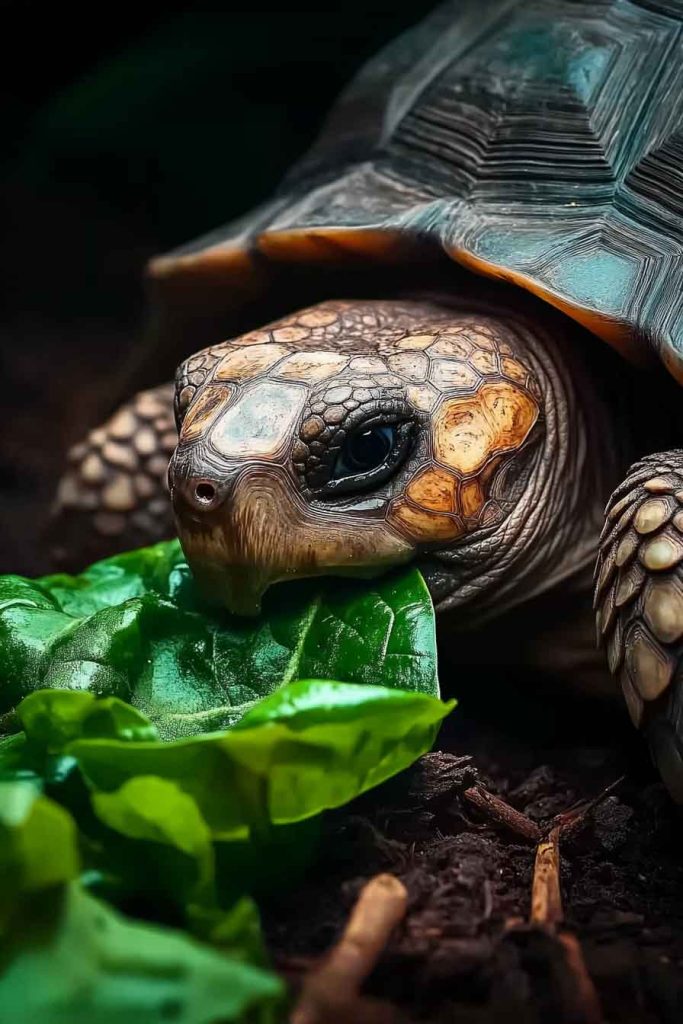
Expert Opinions: What Do Turtle Vets and Biologists Say?
When I started digging around, I looked at what real experts say—vets who work with reptiles, and biologists who study turtles in the wild. And the verdict is clear: spinach should be avoided in a turtle’s regular diet.
Dr. Douglas Mader, a well-known reptile vet, says leafy greens are great for turtles, but not ones with high oxalate levels. That includes spinach, beet greens, and Swiss chard. He recommends going for safer greens like:
- Romaine lettuce
- Dandelion greens
- Collard greens
- Mustard greens
- Turnip tops
These give your turtle all the good stuff—vitamins, fiber, calcium—without blocking calcium absorption.
I also read that wild turtles rarely eat spinach in nature. It’s not something they’d find growing near ponds or rivers. So if they’re not eating it in the wild, maybe we shouldn’t be giving it to them in captivity either.
Is Spinach Worse for Some Types of Turtles?
Yes, it can be.
Different turtles have different diets. For example, red-eared sliders and painted turtles are more omnivorous, so they eat a mix of plants and proteins. Spinach might tempt them because it has a strong smell and soft leaves. But that doesn’t mean it’s good for them.
Box turtles, on the other hand, are even pickier. Their diet needs to be super balanced between fruits, veggies, and insects. Giving them spinach regularly could throw off that balance and lead to long-term health problems.
Baby turtles are most at risk. Their bones and shells are still growing fast, so they need every bit of calcium they can get. Feeding spinach to hatchlings or young turtles—even just once a week—could slow down healthy development or cause deformities.
What Can You Feed Instead of Spinach?
Now that we know spinach isn’t the best idea, you might be wondering—what greens can turtles eat safely?
Here are some great choices that are low in oxalates and rich in calcium and nutrients:
- Romaine lettuce – Easy to find and gentle on their tummy
- Dandelion greens – Super healthy and a favorite for many turtles
- Collard greens – Packed with calcium, but use in rotation
- Mustard greens – Great for digestion
- Turnip greens – Another high-calcium leafy option
- Escarole or endive – Mild and turtle-safe
I like to switch it up each week, so my turtle doesn’t get bored. I’ll toss in a few greens from this list and sometimes add a bit of carrot or squash for variety.
If your turtle is aquatic (like red-eared sliders), you can also give them some safe aquatic plants like duckweed or water lettuce. Just be sure they’re pesticide-free.
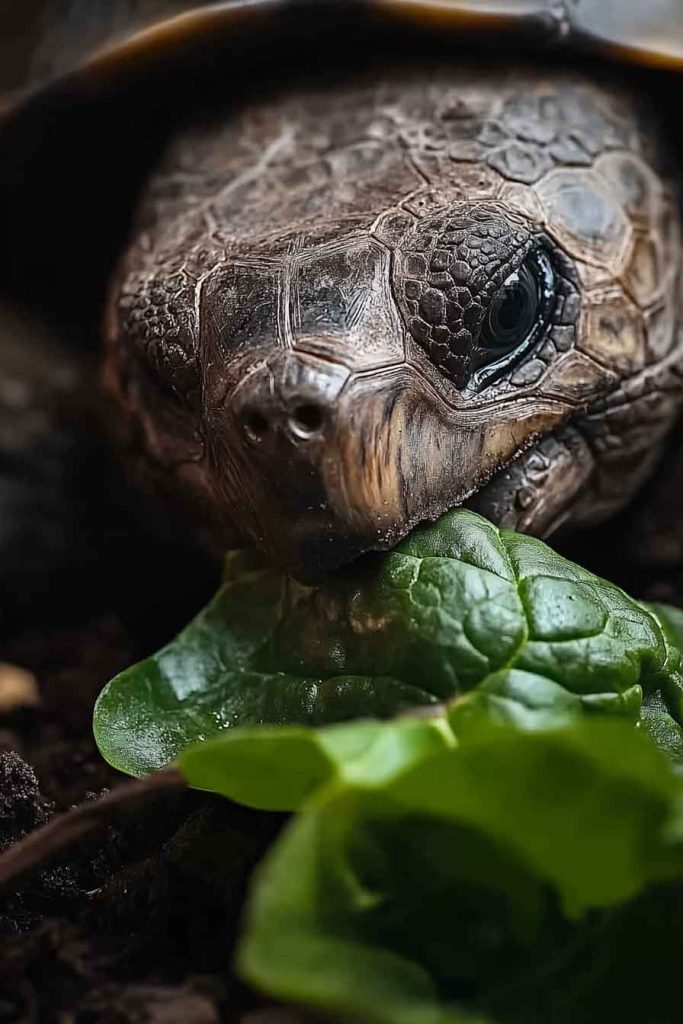
How Often Can Turtles Have Spinach?
If you’re wondering whether spinach is okay once in a while, here’s what I suggest:
- Only offer spinach rarely, and in very small amounts
- Never feed spinach to baby turtles or turtles with shell problems
- If your turtle already gets plenty of calcium and sunlight, a nibble once every few months may be okay—but why risk it?
When in doubt, it’s always best to stick with the safe stuff.
Frequently Asked Questions (FAQs)
Can baby turtles eat spinach?
No, never. Their bodies are still developing, and any calcium loss could lead to serious shell and bone problems.
Is cooked spinach okay for turtles?
Nope. Cooking doesn’t remove the oxalates—it actually concentrates them in some cases. So cooked or raw, spinach is still a risky veggie.
What happens if my turtle accidentally eats spinach?
A small bite isn’t likely to cause harm right away. But watch for any signs of sluggishness, weakness, or trouble moving. If you notice anything unusual, contact a reptile vet just to be safe.
Can turtles eat spinach stems?
The stems still contain oxalates, so it’s best to skip them too. Stick with greens that are known to be safe.
Final Thoughts
So, can turtles eat spinach? Well, they can—but they really shouldn’t.
As a turtle owner, I know how much we want to give our pets tasty, healthy treats. But not all human “superfoods” are good for them. Spinach might be great for us, but for turtles, it can quietly cause more harm than good.
There are so many safer, healthier greens out there that give your turtle everything they need without the risk. So I say—skip the spinach. Your turtle will thank you with a strong shell, happy splashes, and lots of little turtle smiles.

